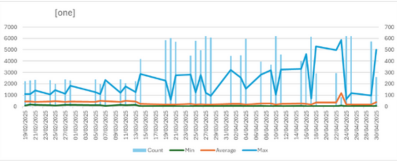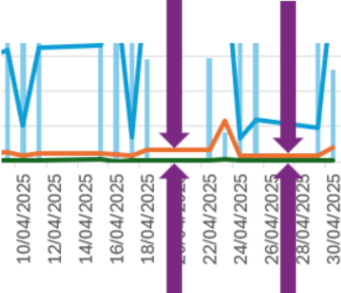How EduXS continues to evolve
The tenth demo iteration of EduXS on the 1st of May has just been completed, marking two months since the platform went live. Although active development is currently scaled back due to budget limitations, the team continues to improve performance and prepare for the next phase.
Since its launch, EduXS has run without outages or major issues. A quiet milestone that speaks volumes about the robustness of the platform. In the coming quarters, the focus will be on essential maintenance: keeping everything running smoothly, updating core libraries, and ensuring users experience no disruption.
Laying the groundwork for stronger data
To further increase the value of the platform, the team has initiated the hiring process for two key roles: a data manager and a data entry specialist. The aim is to improve both the quality and quantity of data on EduXS, with each role having a distinct focus. The data manager will take a strategic lead, overseeing data collection and curation by theme, while the data entry specialist will support with hands-on population of records.
This approach will allow EduXS to focus on specific areas of content and work towards completeness per topic – rather than scatter information across many fields. Once in place, these roles will help ensure the platform remains useful, accurate and trusted.
Strengthening the foundation: backend improvements
This demo included a series of updates to the backend of EduXS. Mostly invisible to users, but important to ensure data accuracy and a smoother experience.
Partial synchronisation
EduXS already supported full synchronisation, a process where the entire dataset from Baserow was reloaded into the database used for the live application. While effective, this approach was disruptive and had to be performed outside of working hours.
A Diff tool was introduced earlier to compare differences between Baserow and the application database, but it only highlighted discrepancies. Now, that tool powers a more sophisticated solution: partial synchronisation.
Webhooks with a safety net
In theory, Baserow webhooks should automatically trigger updates when data changes. In practice, these webhooks are not always reliable. Missed or failed webhook calls meant that updates weren’t consistently reflected in the live system.
With partial sync now implemented as a fallback, the system automatically detects and corrects these inconsistencies, without requiring a full reset. This creates a more resilient and less error-prone process, ensuring the data visible in EduXS aligns more closely with the source.
Filter refactoring
Data quality remains a core principle for EduXS. Only records with the internal status “Reviewed” or “Review pending” should be visible to users. However, the original filtering system conflicted at times with other user-driven filters, causing inconsistencies.
This issue has now been resolved through a full refactoring of the backend filters. The result: a more reliable and consistent filtering mechanism, where only qualified records are displayed, and edge cases are properly handled.
Adding context: service–sector relation
As a further enhancement to the data model, services can now be explicitly linked to both a sector and a country. This allows for more precise filtering and provides additional context to each record.
This is the first step in a broader set of planned model improvements aimed at enriching the structure and relationships within EduXS.
Faster where it matters: frontend performance
Frontend improvements are subtle but meaningful. All packages have been updated to their latest versions, and performance on the overview page has notably improved.
Load times have dropped by up to two seconds when navigating between overview and detail pages. A small change that makes a big difference for users navigating growing volumes of data.


More than a website: context for every user
The EduXS website has been updated with more practical information tailored to four key user groups:
- Policy makers
- Educational institutions and alliances
- Architects and experts
- Suppliers and developers
Each section now offers a snapshot of what EduXS can do for that audience, alongside links to live examples in the platform. These clickable previews provide a seamless bridge between browsing and exploring the underlying data.
Adding value to what already exists
A highlight of the demo was an example drawn from EdMatrix, a long-standing directory of educational standards maintained in the United States. The initiative is led by Brandt Redd. By integrating EdMatrix into EduXS, new value is created: relationships between standards are made visible, links to models like HERM and ELM are established, and users can navigate directly to authoritative sources.
This exemplifies what EduXS is about. It’s not about gathering existing information, but connecting it, enriching it, and making it more useful across borders.
An invitation to contribute
As EduXS continues to grow, so does its potential. Users, contributors, and experts are encouraged to help expand the platform by sharing data, insights, and examples.
“It’s a two-way street,” said project lead Ludi Cosman. “We gather information, but we also invite others to share theirs. To build a richer, more connected landscape for education in Europe.”
For questions or contributions, please contact: info@eduxs.eu.
The demo of the 11th iteration will take place on 28 May 2025. Would you like to attend? Send a message to info@eduxs.eu, and you’ll receive an invitation link.
